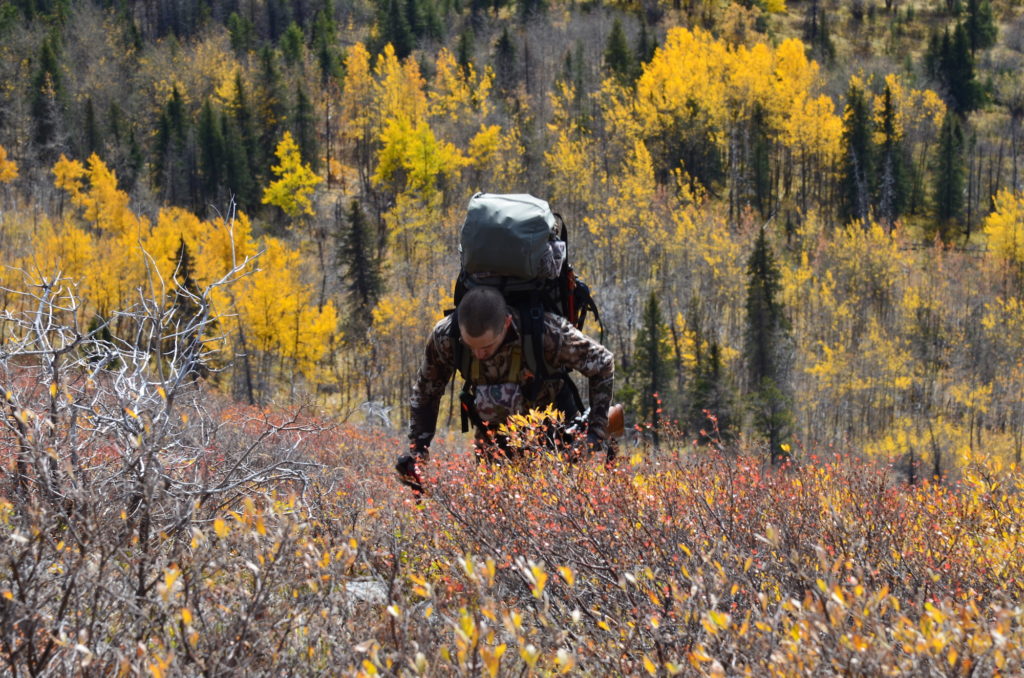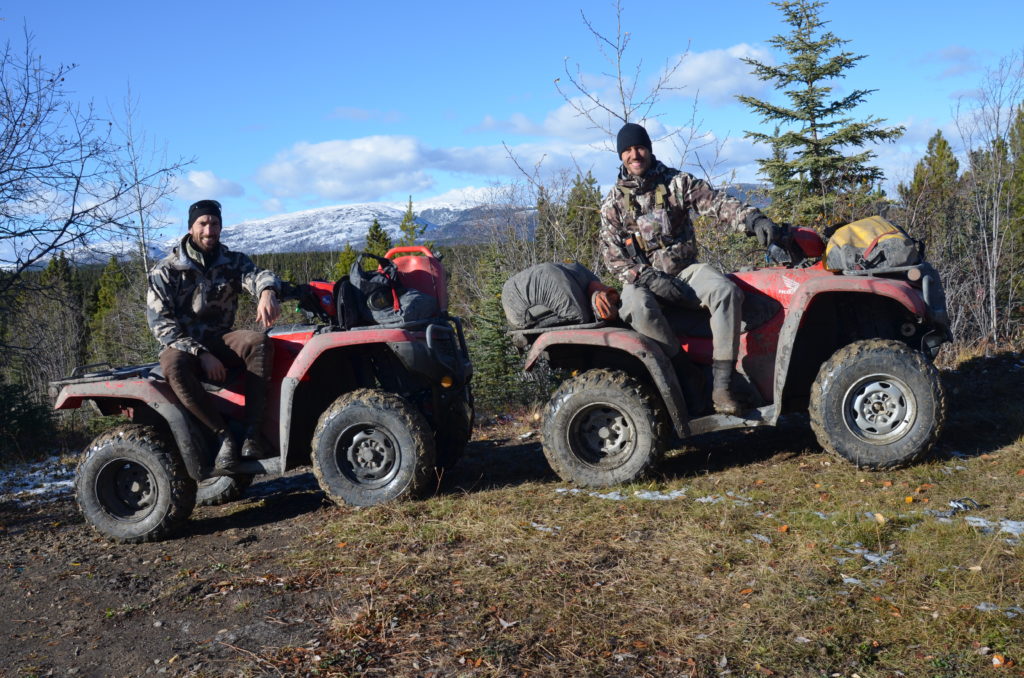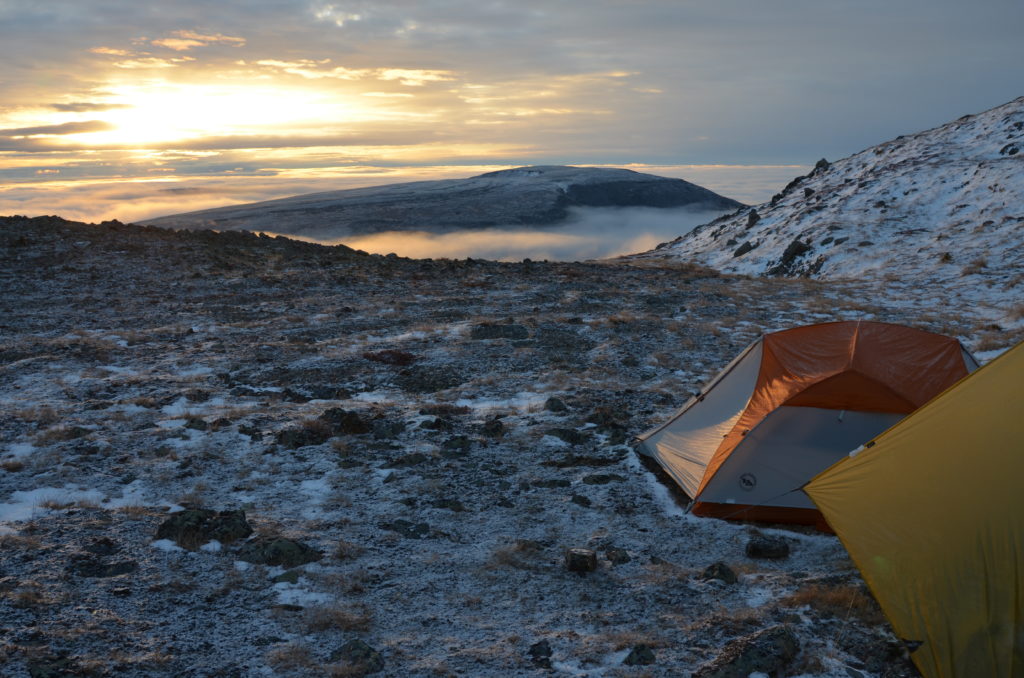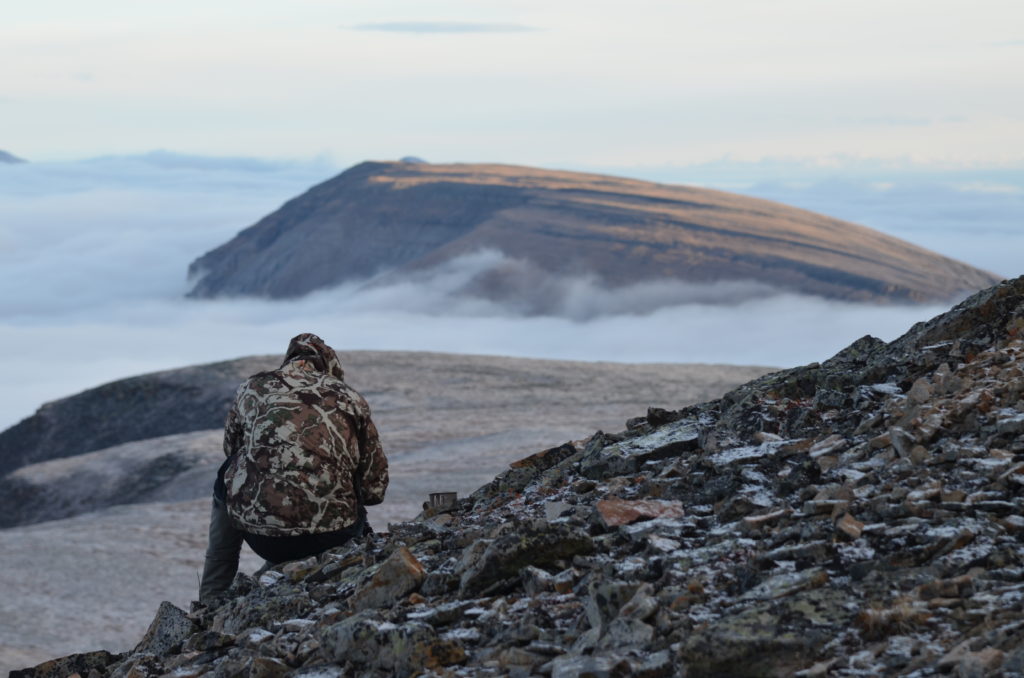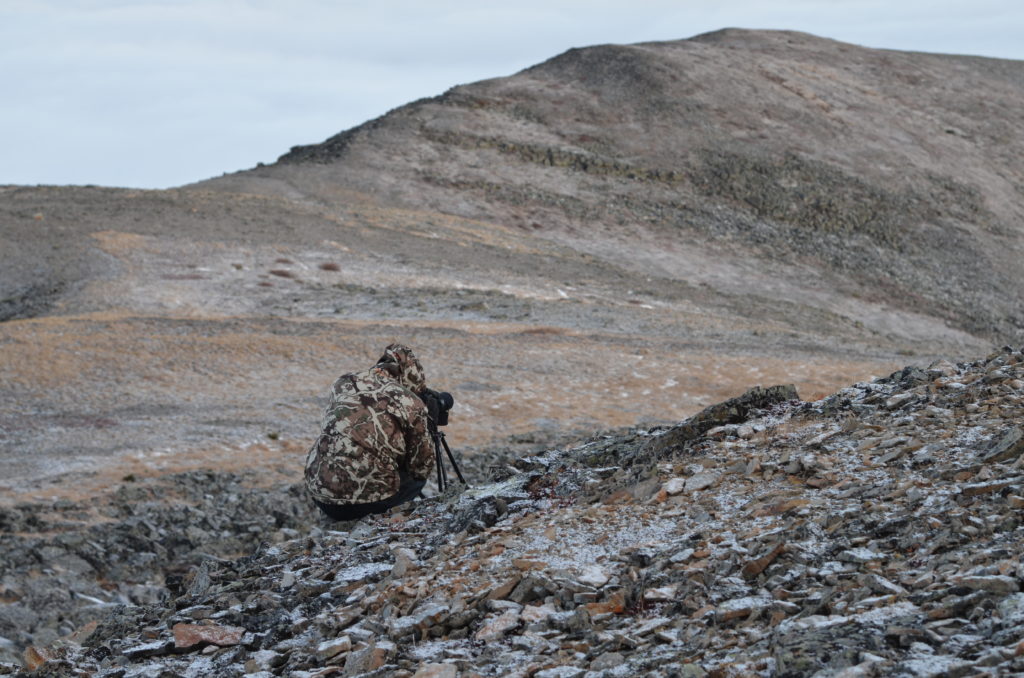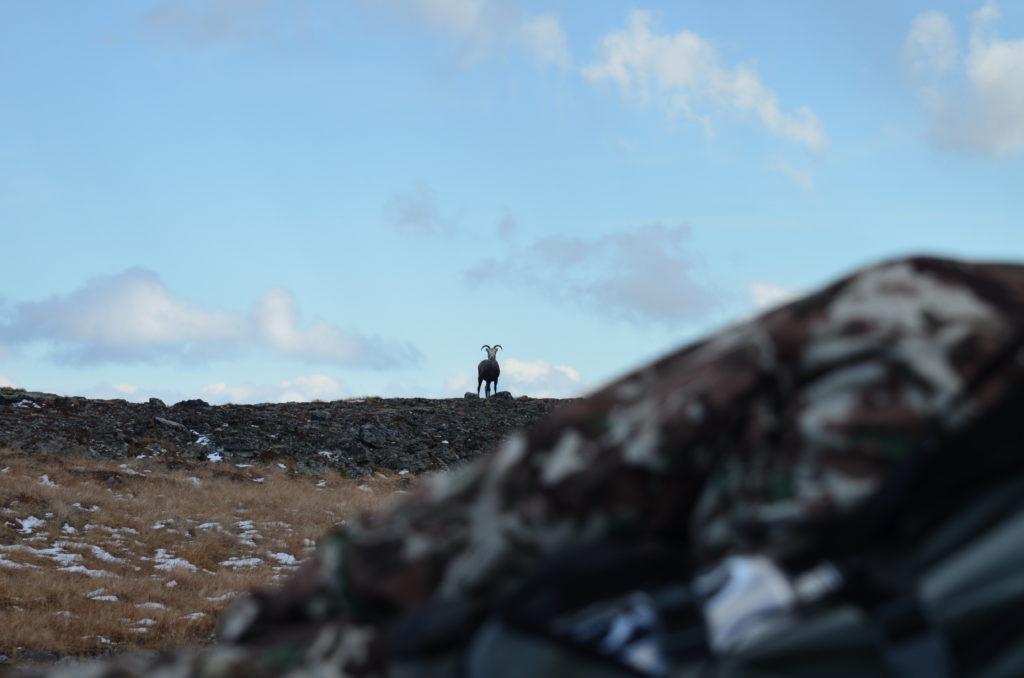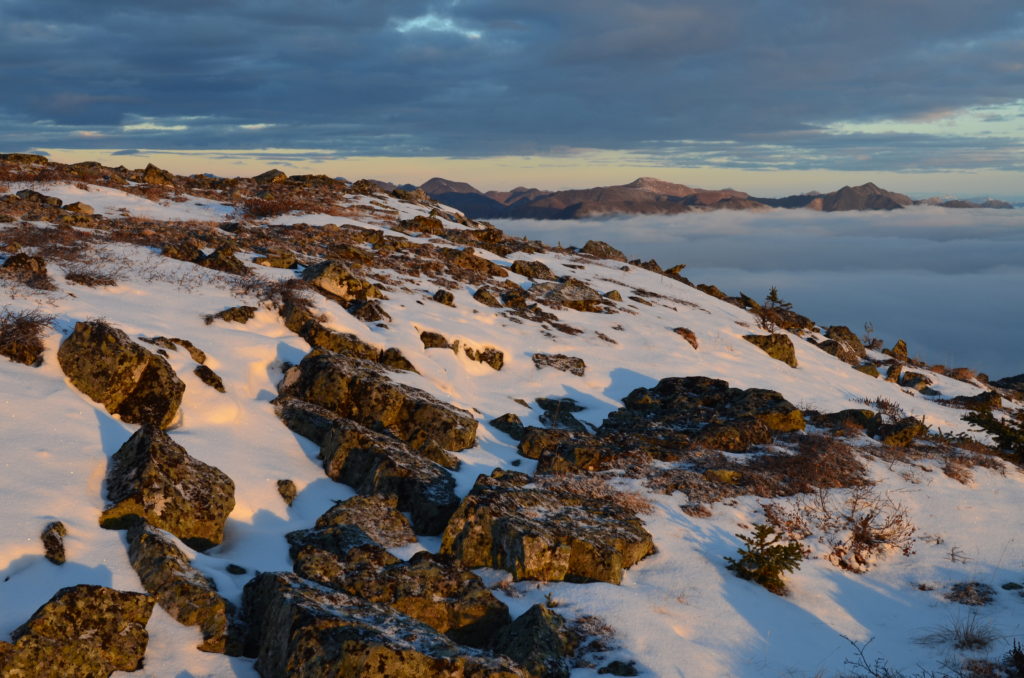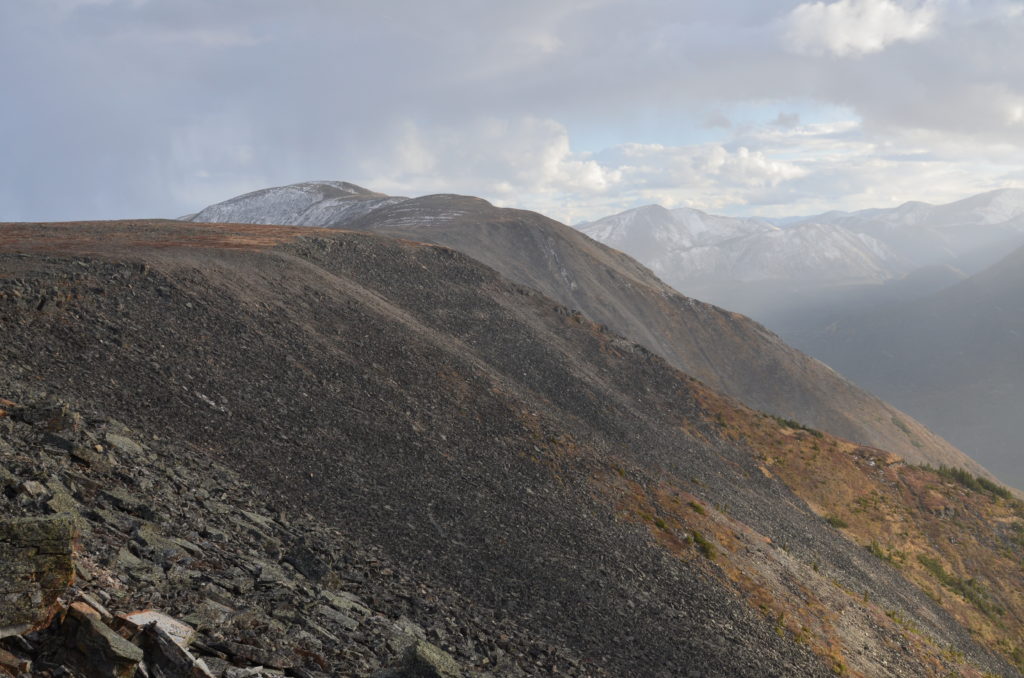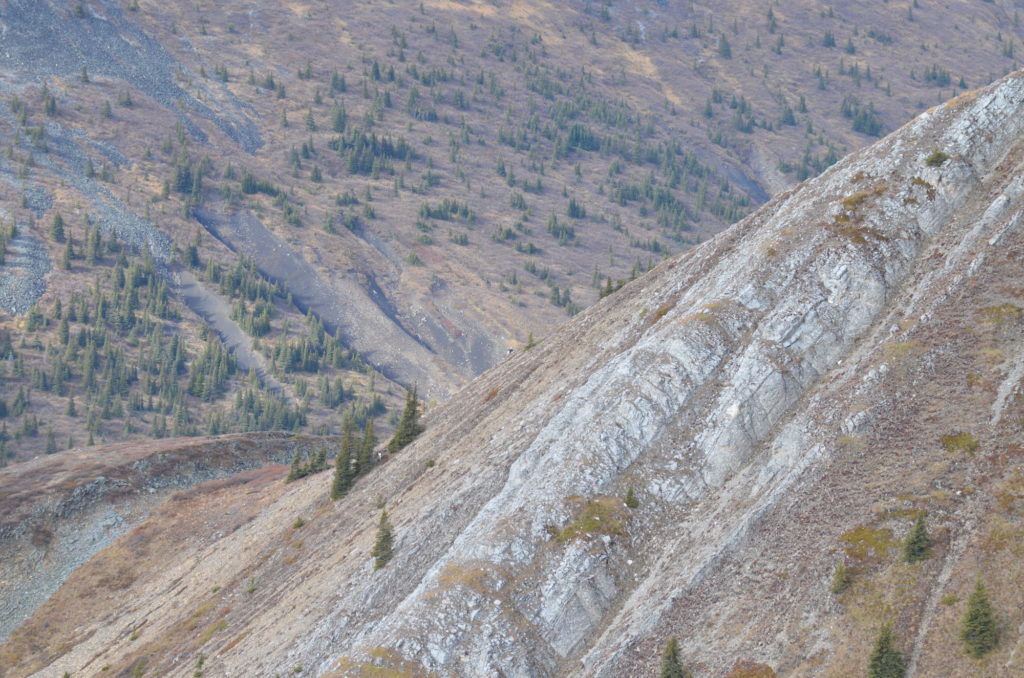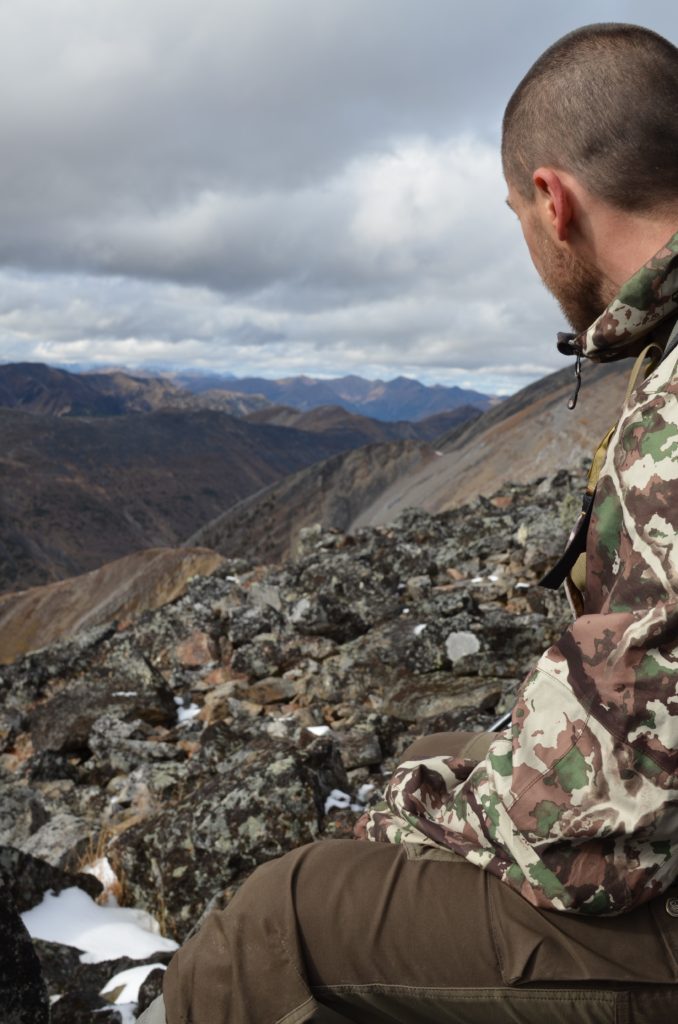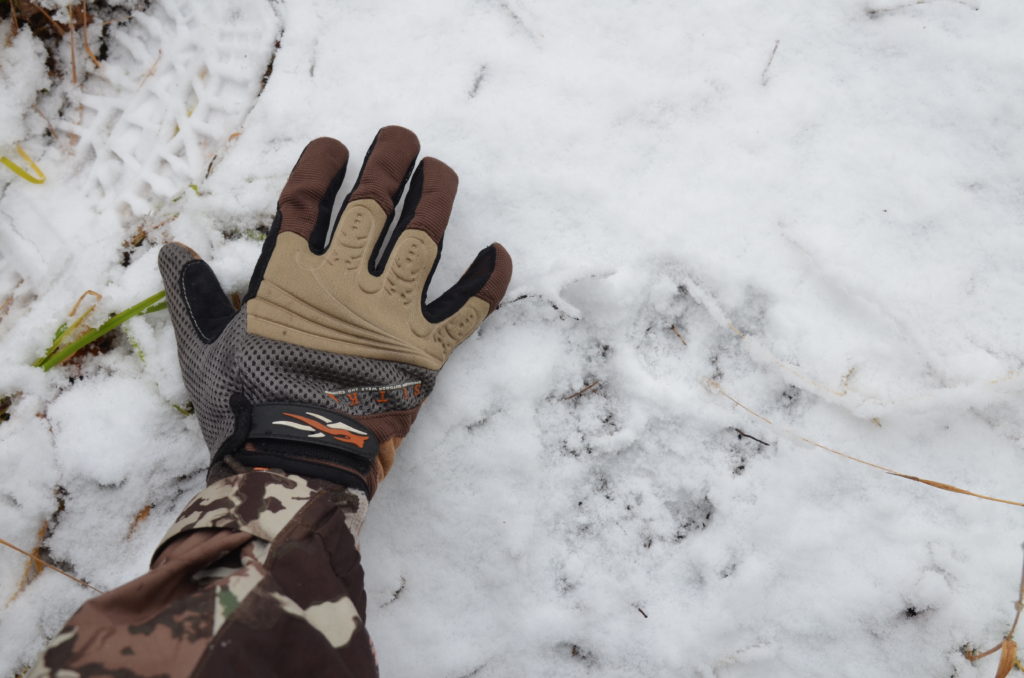When the JOMH launched in the summer of 2014 there were more than a few questions floating around online as to who exactly was behind this new publication. Specifically, many wondered what the “pedigree” of the founders was and for some that seemed to boil down to our track record of killing trophy quality game.
The JOMH was never designed to be a public record of our exploits conquering nature. It was founded based upon a deeply rooted love of the mountains and the pursuit of the many species that call the mountains home.
We strive only to provide a virtual destination for those that share this passion for the pursuit and the experience.
For what it’s worth, I have yet to kill my first ram despite dreaming of doing so for over seven years now. Every year my love for the mountains, in particular the storied sheep ranges of the North, grows deeper than I ever thought possible. It literally burns in the depths of my soul. I know there are many of you out there that know this feeling well and can empathize with the emotional and spiritual journey that entails becoming a sheep hunter.
This is the latest chapter in that journey, the story of my quest for a Stone sheep ram this past September.
The Muskwa Kechika Management Area (M-KMA) is a vast 6.4 million hectare region of Northern BC made up of parks, protected areas and management zones that keep this beautiful part of our great province as wild as can be expected in the 21st century. Motorized vehicle access is heavily controlled and for most hunters transport into these wild lands is by bush plane, jetboat, horse or foot. It is a nearly incomprehensible swath of protected backcountry roughly the same size as Ireland.
This immense and globally significant region is home to virtually every species of North American big game a hunter could dream of pursuing and one of the main reasons BC is considered by many to be the hallowed ground of North American big game hunting. Amongst my close group of hunting friends we call our once a year pilgrimage to the North our Annual Hunt of a Lifetime.
We never take for granted just how fortunate we are to live where we do.
For the past number of years I’ve used one of two forms of transport to access my planned hunting destinations, jetboat and bush plane. Both of these represent adventures in themselves. There are few things as thrilling as getting up on step on a fast flowing Northern river or the first sight of an isolated lake deep in the wilderness, but these forms of transport do not come cheap and often require entire days dedicated to transport alone. I have a two-year old boy at home and another on the way so this year especially I couldn’t afford to lose a day or multiple days to weather or time consuming river based access. JOMH Field Editor Matt Thompson and I decided to take a DIY approach to accessing sheep country and use ATVs to get to a drop camp location from where we’d backpack into the mountains for the week.
We arrived at the trailhead midday on Sept. 18th to clear skies, our spirits running high and a healthy dose of nervousness mixed in. The trail we planned on taking is infamous within the BC hunting community for its gnarly mud, ruts, and water holes that can swallow an ATV to the handlebars when at its worst. We had no clue what we were in for and only hoped we could make it in before dark. There hadn’t been much rainfall in the weeks leading up to our trip so our fingers were crossed that the trail would be in better than average conditions.
As we finished unloading the quads, and began strapping our packs and gear down a group of hunters came rumbling into the unloading area. They were literally covered head to toe in mud. These guys were clearly pros when it came to deep wilderness ATV accessed hunts. Many of the quads had custom built trailers and accessories that were designed to handle the roughest trail conditions imaginable.
It appeared as though that’s exactly what we were in for.
As their ATVs and UTVs all rolled to a stop beside their trucks and trailers, we noticed they’d done well. There was a 6 point elk rack on one quad, an above average set of moose antlers on another, and a 5 point caribou bull on a third. This is what Northern BC is all about, a variety of game opportunities unmatched virtually anywhere else in the world. A couple of the hunters hopped off their machines and sauntered over to chat with us and quickly dashed our hopes of an easy ride in. They told us the trail was the worst they’d seen it in more than ten years of coming into this area on an annual basis. It had taken them over five hours to cover the same distance we planned on riding that day and with barely that much daylight left, time was of the essence. Their final words of advice were, “You’re going to get stuck, just accept it. But if you stay on the fringes of the big mud holes you’ll be able to use your winches and you’ll make it in”. With those words solidifying the fact we’d have our work cut out for us, we thanked the guys for their advice, wished them well on their long drive home, quickly finished loading up, put on our chest waders and hit the trail.
As promised the ride in was one hell of an adventure, with multiple situations requiring the use of our winches and one particular mud hole that swallowed my quad to the fenders. Needless to say we were glad we wore our waders. Despite the trail conditions, we made it to our targeted location with daylight to spare thanks in large part to the fact we were travelling light and could push the pace when the trail allowed. By dark we’d settled into a drop camp at the base of the mountain we’d assumed would be our access point into the alpine based upon our pre-trip Google Earth scouting.
We ended up camped on a small knoll next to another two hunters that had just come in that day as well. Given we were only planning to camp for the night before we backpacked into the alpine, the two hunters were happy for the additional company. As is often the case when meeting new people up North, the common bond of braving the wilderness broke down the conventional barriers of unfamiliarity. The stories and whiskey flowed easily around the fire our first night in-country.
We awoke the following morning to relatively clear skies and our excitement at a whole new level. With the concerns about the trail now behind us, we were standing exactly where we’d hoped to be our first morning and were champing at the bit like quarter horses about to be let loose. Our plan was to hike up the mountain, get on top and hunt our way to the far end of the small range, ideally by the end of the day. Our main objective was an entirely different set of mountains but to get there we’d have to drop down into a trail-less valley and do the big pull back up to reach this range.
We weren’t in a rush as our only goal for day one was to find an acceptable camping location and water source in a position that would allows us to break camp on the second morning ideally within a day’s hike of the next mountain range. We’d hunt our way along the top but stay focused on moving quickly as we didn’t expect to see many sheep on the smaller range.
After a nice hot breakfast from our Heather’s Choice stash we started packing up camp and by the time everything was loaded up the clear skies had turned ominously dark. As we stood looking at “our” mountain the entire upper half disappeared behind clouds clearly carrying snow and lots of it. Within minutes the snow began falling in the valley bottom and in short order we were standing in a full-blown blizzard. As we would come to know over the course of the week, in this valley the weather came in hard and fast.
At this point, we could only wait as the visibility was non-existent and the conditions in the alpine would have been virtually impassable. Other than knowing what mountain we needed to climb we had no idea what route we’d take into the alpine and needed to scout the ridges and slides that were accessible from the valley floor before making our final decision. Without the visibility to scout our approach, we were grounded in camp. After waiting around far longer than either of us had the patience to endure we decided to join the other two hunters on an exploratory tour along the ATV trail that continued deeper into the backcountry to the West. We were ready to make our ascent as soon as the weather broke but until then we might as well enjoy the country.
It wasn’t until after 2pm that day that the snowstorm broke and by then there was no way we’d have time to scout our approach and find a decent camping spot. The skies were far from clear anyways and the idea of getting stuck on the side of the mountain in a snowstorm as darkness fell with no real idea where we were going was not appealing. We stayed down in the valley that night and enjoyed the campfire and company once again.
Day two broke clear and we wasted no time getting loaded up in the event the weather chose to not cooperate with us again. We were making it into the alpine come hell or high water. After wishing our new friends well, we jumped on the ATVs and drove back up the trail to scout the possible approaches and settled on a South facing slope with an old burn that nearly met the trail. We parked the quads just off the trail, threw on our packs and started the ascent. As is usually the case, what looked like a manageable, relatively clear line up the mountain turned out to be a young aspen and willow choked slog up a face so steep that at times you had to be careful how much weight you put on your heels. It was the kind of climb that solidified the whole point of the Mountain Fitness column. There is nothing quite like a trail-less climb with 70 – 80 pounds on your back. We eventually broke through the vegetation and after a brief but sketchy section of loose rock we were on top. The weather had held and now that we were in the alpine we could see for miles and it looked like we’d have clear weather for the afternoon.
After a brief rest to get some food into our bodies we made our way along the summit, staying to the Eastern side of the range so we could glass some nice looking basins as we moved. The snow from yesterday had stayed on top and it was readily apparent that this mountain range was a very cold, dry place. The upper third of “Range 1” as we’d come to know it during our pre-trip planning looked like it would host some alpine water sources but these hopes began to fade as we hiked further along the summit. As the afternoon progressed, some nasty looking clouds began to roll in and we decided to set-up camp in the first protected spot we found. We settled on a small trench in the summit about halfway along the small range, between two knolls that afforded expansive views to the North and South and good access to the basins to our East and West. The only issue was there was no water.
As we set-up the tent and tarp, another snow squall rolled in and they continued for most of the late afternoon and evening. As Matt started the time consuming and fuel consumptive task of melting and boiling snow for water I went and glassed the nearby basins as the light faded. The visibility was spotty at best and the mercury dropped quickly as darkness fell. Our first night in the sheep mountains was a cold one. We hadn’t made it as far as we’d hoped but we were in it now and that much closer to our primary objective.
Day three dawned cold and clear and before having breakfast we decided to put the glass to work during these critical early hours. I went over the knoll to the North so I could get my first look at the South face of the next mountain range. Matt went over the South knoll. I didn’t have my spotter up more than a few minutes before I had sheep in my field of view! They were at least 5 KMs away so it was difficult to make out any details as far as horns were concerned but as the light hit the face more and more sheep materialized and at one point I counted at least 20 Stone’s sheep spread along the now sunlit face. I couldn’t tell if I was shivering because of the -15C temp or my sheer excitement at having this many sheep in view. It was beyond difficult to pull myself away from the spotter but decided to head back to camp and get some breakfast and coffee in me. The range we’d been aiming for was clearly the right one and there was no time to lose if we were going to make it there by day’s end.
On a whim I went around the Western side of the knoll, a direction I had yet to scout, taking a circuitous route back to camp. The basins on the Western side of the range we were camped on were far steeper than those on the Eastern side and would stay dark and cold well into the morning so I didn’t expect to see much but didn’t want to leave any stone unturned, no pun intended. As I slowly made my way around, Matt was coming around the same side of the Southern knoll and I excitedly updated him on what I’d seen on the far mountain range. He’d come up empty in his scouting and we agreed it was time to head back to camp and get some food into us so we could push for the next mountain range. Before the short hike back to camp, I decided to take a quick peak into a cliff-rimmed basin just below where we were standing so Matt sat down and scanned the terrain with his binos. I hadn’t taken more than a couple of steps before he uttered the words we all dream of hearing: “Sheep!”
He was looking back, due South, along our small mountain range and as I pulled up my binos I caught the last glimpse of a couple white butts disappearing over the edge into one of the basins at the far Southwestern end of the range. Neither Matt nor I saw horns but we were left wondering what other sheep might be down there. We officially had a dilemma on our hands.
We walked back to camp and over coffee and a hearty breakfast considered the possibilities. Option one was to stay the course, break camp and push for the next mountain range where we knew there was a solid number of sheep. Option two was to hunt back along the Western side of the range we were currently camped on and see if there were more sheep, or more importantly, a legal ram tucked into one of the numerous cliffy basins lining that side of the mountain. We decided it would be folly to not hunt the mountain we were camped on given the sheep sighting and loaded up our packs for what we thought would only be a couple of hours of hunting before coming back to camp and making a push for the far mountain range.
The reality was that each of the basins along the Western aspect was chock full of potential sheep habitat. Steep rocky cliffs, bluffs and benches unapproachable from the bottom with long finger ridges covered in food sources fanning out beneath them. We scoured each and every one of them, but it took far more time than we’d initially assumed and I started to doubt our decision. We found sheep but only small groups of ewes, lambs and the odd immature ram and given how much time it was taking to pick apart the terrain the odds of breaking camp and making it to the next mountain range were dwindling by the minute. We’d only made it about halfway back to where the sheep had disappeared earlier that morning so I made the call to straight line it to the far end and bypass the remaining basins. As we fast marched our way across the summit and came over a slight rise we ran into a young ram availing himself of the mineral licks dotting the plateau. With zero cover to hide behind we dropped to the ground and let him make the first move. Matt managed to snap a few photos while the young ram tried to figure out our intentions and eventually decided we didn’t pose a threat and disappeared over the side. After scouring the basin he’d dropped into and glassing the remaining terrain we booked it back to camp, but by now we were well into the afternoon and definitely behind schedule. We were also low on water again and the thought of going through the lengthy process of melting and boiling snow had my nerves a little frayed. It was not looking like we’d make the second mountain range today after all and I seriously began to question the decision to hunt the way we’d come. The hike back was a quiet one.
After getting some lunch into us we re-visited the plan for the afternoon. There was no way we were breaking camp and getting off the mountain by the end of the day. We considered setting up at the far end so we were that much closer to the other mountain range but we were in a good spot from a wind protection standpoint and there was plenty of clean, drifted snow on the leeward side of the rocks and knolls around us so despite the time cost of melting and boiling snow, we had plenty of “water” where we were. We decided to take the afternoon to hunt North but focus on making the far end so we could get our first in-person look at the valley we’d have to navigate to get to the mountains we’d been aiming for all along.
For the first day yet, the weather stayed on our side and the hunt down was utterly breathtaking in terms of the scenery that unfolded before us. I don’t know how many times I thought to myself, “that’s the most beautiful view I’ve ever seen”. The hike to the far end was uneventful sheep wise and we made it to the Northern terminus as the afternoon became evening. I set-up the spotter and scoured the now much closer face upon which I’d seen so many sheep earlier that day. It was barren.
As I sat picking apart the benches, cliffs and ridges Matt glassed the valley bottom assessing the navigability of the terrain. When I shifted my focus to the same task my heart sank. The valley that separated the two ranges had appeared on Google Earth to be relatively full of muskeg but passable. Looking at it from the summit I couldn’t see a way through it or around it that wouldn’t take more than a day to achieve. The cost of losing our first day to the snowstorm and the hunt from this morning started to sink in. To break camp the following day, drop down into the valley, navigate the mess that was now before us and then haul ass back up onto the summit of the second mountain range was going to take longer than we’d hoped. If it did in fact take more than a day, we’d only have one day to hunt the far mountain before we’d have to turn around and hike the two days back to the ATVs and head home. Matt and I deliberated over the possible routes, and as the light began to fade with still no sheep in sight on the far mountain we started the hike back to camp. It was another quiet hike with only our thoughts to occupy the time.
When we got back to camp and waited for the water to boil for our dinners we sat down to make our final decision. At this point, Matt confessed that his left ankle was starting to give him some trouble. Just a month before the hunt he’d attempted a 200 KM trail race through the mountains a few hours East of Vancouver and had been forced to drop at 144 KMs due to an ankle and foot injury he’d sustained during the race. He’d been doing well recovery wise but the added weight of his pack and the sub-zero temperatures were re-irritating this barely healed injury. He was legitimately concerned that his ankle wouldn’t hold up to the task of the death march to the other mountain and back, especially if we came out with a ram. I sat in stunned silence as the final nail was hammered into the coffin of making the far mountain. I briefly considered going it alone, fast and light, but that wouldn’t change the fact I’d likely only have a day to hunt the far mountain range, an unrealistic proposition as far as finding a legal ram and packing it out. I was devastated.
As darkness fell, I mentally spiraled into the depths of self-doubt and self-pity. Why hadn’t I pushed us to camp at the far Northern end as we’d planned all along? Why hadn’t I stayed focused on the second mountain range and voted to break camp earlier that morning rather than hunt the opposite direction? Why hadn’t the weather cooperated? Had we made the right choice coming in here in the first place? Was I even cut out to be a sheep hunter? I told Matt I needed some time to myself and walked over the Northern knoll to be alone with my thoughts. From the excitement of the morning to how I felt now, less than twelve hours later, I’d ridden an emotional roller coaster and was spent. For the first time on the trip, the frigid temperatures started to get to me. I eventually walked back to camp and Matt and I ate dinner in the shelter of our tarp and made the final call to break camp the following morning and head back down to the valley we’d left just two days before. The whiskeys we poured for our nightcaps were a little stiffer than usual.
Day four brought with it some of the most incredible photo opportunities I’ve ever seen. We were on top of the world. With the valleys encircling our range immersed in a thick inversion fog it was difficult for us to split our time equally between our binos, spotter and cameras. The fog reached high up the slopes and basins around us so our glassing was somewhat impaired at first but we maximized the opportunity to take some once in a lifetime photos.
As the sun rose and the fog began to lift we re-focused on the task at hand, finding sheep. Literally no more than 50 yards from our tent I settled into some rocks perched above the closest East facing basin to camp. It was a big, wide bowl with some benches roughly a quarter of the way down playing host to some greenery. As the fog thinned I realized the rocks I’d been looking at were moving. There were close to a dozen sheep in easy view and no more than 500 yards distant. Again, the band was only comprised of ewes and banana rams but I enjoyed the quiet and stillness of the morning while I watched their morning unfold. With the inversion still hiding the valley below it felt like the sheep and I were in our own little world, completely removed from the complexities of modern day-to-day life. I soaked in the moment as it began to sink in that ram or no ram I was experiencing one of Nature’s great gifts. The doubt and self-pity of the night before began to lift like the fog that had previously hidden the sheep from my predatory eyes.
I scoured above and below the band picking apart every spot I thought might hold a ram staying away from the crowd but with none in sight I headed back to camp. Matt and I took a few more photos and I took one last walk over the Northern knoll to look through the spotter at the South face of the far mountain. Although the immersion fog still hid much of the broad base, the upper third was in view and it was devoid of sheep. I knew full well there were sheep on that monolith but I’ll admit that not seeing them that morning lessened the pain of our failed attempt to get to them.
We broke camp and loaded up for the hike out. Over breakfast we’d decided that given the temperatures we’d try and make it to the outfitter camp further up the valley, not far from where we’d set-up for the first two nights. If the outfitter’s camp wasn’t full, there were cabins there that the public could rent for a very reasonable fee. I’d printed off some “Plan B” maps for the area to the South of the outfitter camp as a friend had hunted that direction years ago with great success and spotted sheep on some of the mountains that were within a hard day’s hike of the cabins and airstrip. The hunt wasn’t over yet.
It was an uneventful hike off the mountain, the immersion fog eventually broke and by late morning we had a beautiful day on our hands. We made it to the ATVs in good time and by mid afternoon our packs were off and strapped back onto the quads for the ride to the outfitter camp. We rolled in about an hour later with the skies promising more snow and, unsurprisingly, the outfitter and his guides were nowhere to be found but there was one cabin open and we quickly claimed it for ourselves. We’d eaten on the go since breakfast so we took the opportunity to light a fire in the old stove, make a hot lunch and some coffee and pump some water from the creek running through camp. It felt downright luxurious after our days in the sub-zero alpine.
After thawing our bones over lunch we decided to take the ATVs along the trail past the outfitter’s camp and scout some of the potential plan B locations for a hunt. We both also had elk, moose and caribou tags in our pockets and by now our single-minded focus on a ram had begun to shift to making the most of the time we had left. As we’d seen with the hunters coming out as we were heading in, there was nothing to say we couldn’t find ourselves packing any one of those species out of the valley.
It was close to 3pm by the time we suited back up and jumped on the quads. I’ll admit that it was a nice break for the legs and more importantly, given how little time we had left, I was thankful for the speed with which we could cover ground and therefore make some decisions. Our recon was fruitful and we found a few horse trails that looked they lead into the area were considering for a day hunt from the cabin. On the way back to camp, I took a quick glance at the large mountain that towered over the airstrip and outfitter’s spread and slammed on my brakes, nearly sending myself over the handlebars. I’d picked up some out of place dark spots in the otherwise stark white snow covered ridges and bluffs looking over the valley.
I threw up my binos and to my disbelief I had sheep! Three rams no less and two of them definitely needed a closer look. They were slowly feeding their way higher up the mountain and headed for a nice looking ridge with some benches that afforded an expansive view of the country below them. I jumped off the quad, pulled my spotter out of the pack and sat down next to the ATV trail. The rams were a ways off, a good 2 KMs at least and the light was fading fast. As I found them in the spotter and fine-tuned the focus to get as close a look as possible Matt, standing beside me, casually said, “I’ve got more sheep…looks like another 3 good rams and a bunch of young ones and ewes”. I couldn’t believe my ears! After the emotional roller coaster of the previous day and the effort we’d put in, we were practically sitting on the end of the airstrip and within sight of the cabins with no less than SIX potentially legal rams in view. My hands began to shake with the excitement and my attempts at focusing the spotter were futile in the fading light. Matt, the calmer of the two of us, took over spotter duty and tried to get a good bead on the three rams I’d spotted headed for the ridgeline.
The band Matt had spotted were all the way down at tree line, with many of them feeding right in the aspens that couldn’t have been more than a quarter of the way up the mountain. I scanned the band with my binos but it was hard to get a clear look at them, as they kept moving behind the trees. Matt was right though, there were at least three in the group that needed a closer look, with one clearly old ram carrying some nice mass all the way round to his cheeks where he was broommed off on the side I could see. In the meantime Matt had dialed in as best as he could on the other three rams and in the fading light I took another look. The rams had bedded down on the benches I’d suspected they were heading for and two of them were very close to legal although neither were clearly shooters. We put them to bed and headed back to the cabin as the darkness of night settled onto the valley. I was on cloud nine. After the emotional toll of our failed attempt on our primary objective we still had a chance at a ram. Over dinner in the warmth of the cabin, we settled on a plan to be at the end of the airstrip at first light so we could hopefully catch the rams out feeding, put them to bed for the morning and plan an assault on the mountain. We needed to get a closer look.
Day five found us behind the glass again and to my utter joy the rams were right where we’d hoped they would be, feeding along the bluffs that lead up to the benches they’d bedded on the night before. In the clear morning air, we were able to rule out one of the three as being too young but of the remaining two, one ram was damned close. His left horn appeared to break the nose but he kept moving his head like he knew I was watching him. He sported a beautiful wide flare that compounded the difficulty of ageing him from a distance, decent mass well into the last third of his horns and a thick neck, and lustrous dark coat that was everything you’d hope for in a late season ram. He looked like a brute and I was mesmerized.
We watched until they bedded back down on the benches and started to formulate a plan. They were bedded near the top of a Southwestern facing ridge with a series of stepped benches leading down to tree line. To stay out of view we’d have to come up from the far Eastern aspect of the mountainside facing us, a fairly gnarly approach through some boulder fields and rock slides with some pockets of trees for cover. There was a small bluff running diagonally down the face of the mountain just below the scree that marked the final approach to the summit. This bluff wrapped around the front of the face and looked like it would put us a few hundred yards above the rams and in an easy position to confirm if either was a shooter. We hopped on the ATVs and headed back East along the trail so we could pick our final route.
After parking the quads we strapped on our packs that we’d stripped down to move fast for a day hunt and made our assault. The climb was indeed gnarly and even steeper than our approach onto the other mountain range. We navigated the unstable boulder fields and rock slides and made it to a spot below the crest of the bluff we planned to take around the front of the face. We’d have to stalk and eventually crawl our way slowly forward if our scouting from the spotter had been accurate. It had been hours since we’d been on the airstrip at first light so we had no idea if the rams were still bedded down or if they’d moved. We crept forward, carefully peering over each knoll and prominence we encountered. What looked like a clear line of sight from the bluff down to the benches we’d last seen the rams on was a cascading mess of knolls, humps and rock striations that meant we had to move even slower and further along the bluff than we’d hoped to get in sight of the benches.
As we moved slowly closer to where we thought the rams should be, I began to get nervous. The thermals had been driving the air from below throughout the climb but the farther we made it around the face the more swirly the wind behaved. One moment my wind checker would be blowing straight up towards the summit and the next it would spiral in the air in front of me. Further, we should have seen the rams by now and I had bad a feeling they’d gotten up and fed higher up the ridge potentially putting them on parallel with us not below us as we’d planned.
Just as we crested the last prominence blocking our view of the ridgeline and benches a gust of wind hit me square in the back with full force. I stopped dead in my tracks and muttered a few expletives. With renewed urgency, I led us further along the bluff, tip-toeing through some of the scree that blocked our path. I was in full predator mode, laser focused on the ridgeline and benches down and to my left where we’d put the rams to bed. I should have been looking straight ahead.
As I scanned the benches and tree line, wondering if they might have fed down, from behind me Matt hisses, “Dude!” and points across an impossibly steep and impenetrable canyon. I look up just in time to see the lead ram scaling the far wall of the canyon like Spiderman before dropping over the other side, the second ram is hot on his heels and I get my binos up in time to get a brief glimpse of his headgear. Definitely not legal, but the lead ram looked no less promising than he did from the airstrip. For the second time in two days, my hopes of a ram evaporated into the wind that swirled around us. Words cannot describe just how dejected I felt.
Gathering myself, I looked up the mountain and assessed the navigability of the scree we’d have to climb to make the summit and have a chance of trying to find the ram in the next basin. It was the steepest grade we’d encountered yet and Matt quickly pointed out it would take us hours just to make it to a point where we could even see into the basin the rams had escaped into. It was well into the afternoon by this point and we were going to run out of daylight quickly. We had no tent, no tarp, and only enough food for lunch and some snacks. The emotional and physical toll of the trip thus far finally came to a head and Matt and I argued heatedly about going after the rams. He didn’t think it was a smart call and he’d gotten a better look at the lead ram and was convinced he wasn’t legal. Being a relatively obstinate SOB I wouldn’t take his word for it. I wanted to see for my own eyes. After a series of exchanges not fit to print Matt’s advice finally got through my thick skull. He was right. It would have been an irresponsible call to go after them with no shelter, minimal food and a dwindling water supply.
The self-doubt came rushing back in like a freight train. Why hadn’t I tried to get us higher up the mountain and well above the rams? Should we have used a different approach entirely? Why the f@#k hadn’t I thought to bring a tent and emergency rations? We sat down in the shelter of a big rock in the scree field and set the water to boil and make a much-needed hot lunch. We sat in silence with one of the most expansive and breathtaking scenes I’ve ever encountered in the mountains for our view. Matt eventually got up to take some photos and left me with my thoughts.
We’d come so close and to be honest, the fact that I hadn’t been able to confirm legality was the worst part. I was pissed we’d busted them but I could have taken solace in the fact that neither was legal and we’d made our best attempt. Instead, I was left wondering whether that had been the chance I’d been waiting for all these years. Matt eventually walked back up and we ate lunch. Luckily, we’ve known each other for more than 20 years and like brothers often get into heated exchanges that we laugh off in short order. We ate lunch and hiked down the mountain, hunting our way back in the event the old, broommed off ram was still somewhere on the lower bluffs. We made it back to the ATVs uneventfully and rolled back into the cabin as the light faded to dark.
A storm blew in that night and we awoke to a few inches of fresh snow on the ground and the ceiling so low it looked like you could reach up and touch the clouds. There would be no sheep hunting on our second to last day. We decided to take a horse trail South from the airstrip into a small valley and glass and call for moose and elk. Within a few hundred yards of the airstrip we cut a fresh wolf track on the horse trail. It was one of the biggest I’ve seen in my time in the woods and it was following a solo elk track that led down the horse trail into the valley we were aiming for.
With our senses on high alert we waded our way through the snow covered willows. It was one of those days where the whole environment was saturated with moisture. From the vegetation to the clouds above us it was as damp and cold as it can get. We hiked a few KMs up the valley and intended to stop for lunch and light a fire. Even though we were both wearing solid gear there was nothing that could be done to avoid the moisture. The heavy, wet snow fell off the branches above us and seeped down our necks and backs, the snow on the low lying willows and shrubs pasted against our arms and legs and literally saturated our outer layers. On top of this, the visibility was for all intents and purposes negligible. We wouldn’t be able to see an animal until it was right on top of us. Soaked, hungry and demoralized from the failed ram hunt the previous day we decided to call it and head back to the cabin and dry out. We’d already decided that we couldn’t shoot a moose past noon since we’d have at least a day and a half of work ahead of us to break him down and pack him out to the ATVs a few KMs away. We quite simply didn’t have the time and with no visibility whatsoever the chances of spotting and putting a stalk on an elk were slim.
As we headed back to camp the snow intensified and we hastily made our way back to the quads for the short ride back to the cabin and the warmth of the wood stove. As the snow squalls continued to roll through for the remainder of the afternoon we came to the conclusion that we’d come here to hunt sheep and neither of us had the desire to stay low for another day and go through the motions of hunting game we didn’t even have the time to deal with. With the time left we couldn’t shoot a moose even if we found a legal bull and unless we found a bull elk within a couple KMs of the main trail and quads there was no way we’d make it out on time. I started to long for home and my young family and we painfully made the call to depart a day ahead of schedule. For yet another year my sheep hunt was over and my status as a member of the <1 Club would be maintained.
The ride out was uneventful and we managed to avoid the mistakes we’d made on the way in and made it to the truck in record time. The truck ride out did not come without its complications but that’s another story for another time. If you run in to me at Sheep Show one year, don’t hesitate to ask just how tough a Chevy Silverado really is.
As I sit here writing this story more than two months later I struggle to find the words to describe just how valuable a hunt this trip had turned out to be. From the scenery and photos, to the mistakes and lessons learned I cannot in good conscience call this an unsuccessful trip. The desire to get my first ram, and more specifically a late season Stone has only reached new heights. My case of sheep fever is as bad as it gets. From the mountains they call home to the adventure that is getting there I know of no other experience on this planet that can come close to matching the character forming adventure that is a Northern sheep hunt. For now, I’ll wear my <1 Club status with pride and if you’re one of “us” I hope you’ll agree that although we don’t have a ram on our walls yet, we rarely come home empty handed.



